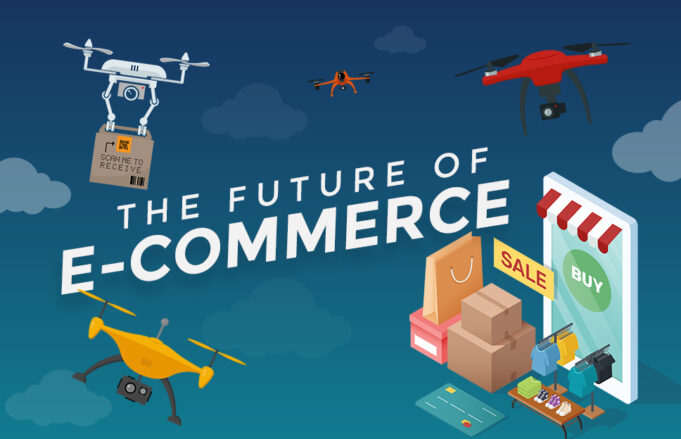E-commerce has become a significant part of our lives. It’s easy, convenient, and accessible, making it no surprise that online shopping continues to grow exponentially year after year. But while the basics of e-commerce have been around for decades, there are still areas where the industry needs to improve – from personalization to seamless checkout processes – to stay competitive. This is where composable commerce comes in a new shift in how consumers shop and companies build their digital presence.
By understanding composable commerce and its implications for the e-commerce industry, businesses can prepare themselves to take advantage of this technology and remain competitive in an ever-evolving market. With its many benefits, composable commerce is set to revolutionize online retail – making it easier for customers to find exactly what they want.
By preparing their stores and marketing efforts to capitalize on this trend, companies can stay ahead of the competition and offer a superior customer experience. With the right strategy and tools, businesses can leverage composable commerce to gain a competitive edge and create more value for their target audience.
What is composable commerce?
Composable commerce is an evolutionary step forward for e-commerce that provides customers maximum flexibility when browsing, buying, and shipping products or services online. It allows buyers to easily customize their shopping experience, from the products they purchase and how they pay for them to how their items are delivered. Composable commerce is designed to make online shopping more intuitive, efficient, and enjoyable for customers while providing businesses with more tools to better serve their customer base.
Benefits of composable commerce
Composable commerce provides numerous benefits that can help businesses and customers in e-commerce. For buyers, composable commerce allows them to curate unique experiences that perfectly meet their needs and preferences. They can choose what they want or don’t want in a product or service and tailor payment plans that best suit their budget. This level of personalization eliminates the need for customers to sift through hundreds of irrelevant or unsuitable products and services, saving them time and money.
For businesses, composable commerce offers greater control over customer engagement. Companies can easily track the preferences of their target market, allowing them to tailor their offerings and better meet consumer needs. This increases customer satisfaction and provides a more efficient way for businesses to increase sales and revenue. Additionally, composable commerce allows companies to be more agile in responding to changing trends and markets – essential if they want to stay competitive in today’s digital landscape.
Challenges of implementing composable commerce
Despite the many benefits of composable commerce, there are still some challenges that businesses must be aware of when implementing this new approach. For starters, businesses must invest in technology and expertise to ensure their e-commerce platform can handle composable commerce. Additionally, companies need to consider how their pricing model will change and if it will become more complex with added customization options.
Another critical aspect to consider is customer data privacy and security, as businesses must comply with all relevant regulations. Finally, businesses must consider how they will promote and market their customized products or services. This task requires strategic planning and creative execution if the business wants to stand out.
The impact of composable commerce on the customer experience
At its core, composable commerce provides customers with a more tailored and personalized experience. Buyers can customize their shopping journey according to their preferences, allowing them to purchase exactly what they want without sifting through thousands of irrelevant products or services. This shift in the customer experience has already enormously impacted how consumers shop online and will continue to do so in the future.
Furthermore, this type of commerce is precious for businesses that offer complex products or services, allowing them to better serve their customer base with more tailored solutions. Another advantage is that companies can track customer preferences, enabling them to create more targeted marketing campaigns and build better relationships with their valued customers.
Tips for setting up and optimizing a composable commerce site
If you’re considering implementing composable commerce for your online store, there are several steps you should take to ensure a successful launch. First and foremost, investing in the right technology will enable customers to customize their shopping experience is essential, this is where headless commerce in correlation with other technologies comes to your advantage.
Additionally, businesses must comply with all relevant data privacy regulations when collecting customer data. Furthermore, companies need to think about how their pricing models will adapt – if necessary – and incorporate new payment options if necessary. Finally, businesses must create an effective marketing strategy that can help promote their custom products or services and stand out from the competition.
Composable commerce for the win
Composable commerce is a revolutionary new approach to e-commerce that offers numerous advantages to businesses and customers. By allowing consumers to customize the products or services they buy, companies can provide their target market with a more personalized experience that increases customer satisfaction.
Additionally, businesses have greater control over customer engagement and data privacy, enabling them to better meet the needs of their customers. Despite some challenges in implementation, composable commerce has already had an enormous impact on how people shop online and will continue to do so for many years. If implemented effectively, it can be an invaluable tool for any business looking to stay competitive in today’s digital landscape.









![Otto Insurance Review [2024]: Does It Actually Offer Insurance? otto insurance](https://www.techpreview.org/wp-content/uploads/2024/04/otto-insurance-reviews-1-64d5cc741e012-238x178.webp)









